3 December, 2001

Today's schedule is much like yesterday's schedule. Dr. Bowser and Dr. Alexander will be making two dives today. This morning they will be making a dive at the "Delta" dive hole. This dive hole is close to camp where the Wales Stream forms a delta when the nearby glacier begins to melt. (Yesterday, they made a dive near the "ice cliffs"). Dr. Korsun and I helped the divers with their gear before heading to the dive hole. I used an "ice breaker bar" to chip around this dive hole cover. The covers keep the dive hole from freezing up overnight. After I released the cover from the frozen ice, I pulled it away from the opening and began to use a net to remove slush from the dive hole.
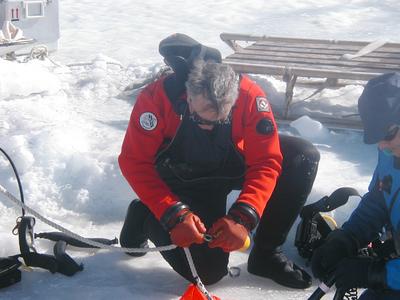
Dr. Bowser is putting flashers (flashing lights) and an emergency oxygen tank on the guide rope leading down into the dive hole. The divers also take their own flashlight because it is dark when they first descend under the ice. As their eyes get accustomed to the light, they can see cracks of light coming through the clear water (about 600 feet visibility). The flashing lights help the divers find their way back to the dive hole opening.

This anchor is screwed into the ice near the outside dive hole to securely hold the guide rope. In Antarctica, extra precautions and care are taken each time the divers go under the ice. Safety is always foremost in our thoughts. Dr. Bowser and his team are constantly trying to think ahead to prevent emergencies from arising.
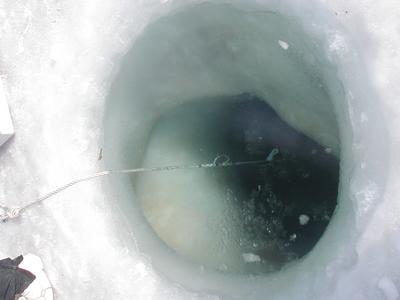
Each dive hole looks slightly different from the other. This dive hole looked narrow and dark, but it opens up as they make their way through the 12-feet of ice.
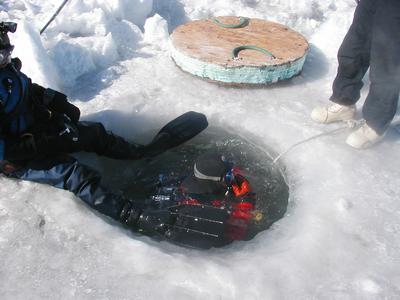
The clouds were moving in over the mountains as we waited for the divers to resurface. My students keep daily atmosphere readings at our school, so I thought they'd be interested in the clouds today. My students gain a better understanding of weather as they compare the temperature at our school with the temperatures at McMurdo and the South Pole. (Great site for current weather information in Antarctica: www.antarcticconnection.com.) It is a nice day today, about 25 degrees Fahrenheit (much like yesterday's weather), but the cold biting wind makes me glad to have on several layers. That wind is just one more excuse to eat my favorite "fruit and nut"/ chocolate Cadbury candy bar during the wait. The divers will be cold when they get out of the 28-degree Fahrenheit water.
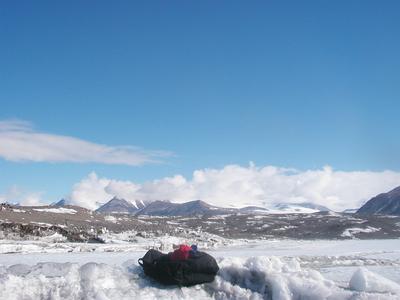
(Clouds coming over the mountains)
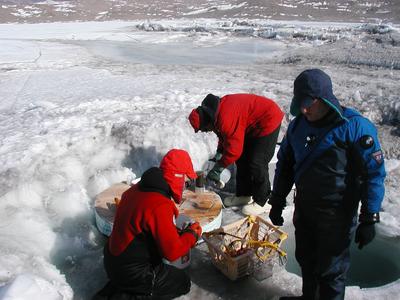
As tenders (tending the dive), Dr. Korsun and I kept track of the divers time under the ice. We also scooped ice from the dive hole to keep it clear, as well as laid things out on the dive cover in preparation for the sediment cores. This photo (above) is taken after the dive. Dr. Bowser and Dr. Alexander (foreground) are bringing up specimens and equipment. Dr. Korsun (background) is preparing the sediment cores to take back to the dive hut. "Getting the science" or "preparing to do" the science takes time, especially in Antarctica.
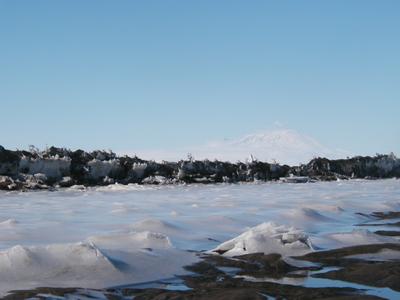
Between the two dives scheduled for today, Dr. Bowser and I moved several 55-gallon barrels to the retro area in preparation for the helicopters tomorrow (See journal entry: December 4). Then we walked along the coastline to observe the changes that have taken place this past week. The sediment beneath pushes up the ice that still covers the moat area. The ice before the transition zone breaks easily as we cross.
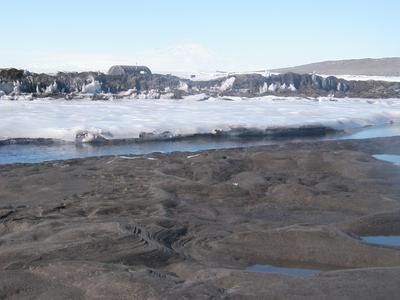
When the tide is out, it is easy to see ripples in the sediment. The ice around the stream is being eroded away much like the land around the rushing stream. My students will appreciate the next few photos since we just completed a "Land and Water" inquiry-based kit before I left for Antarctica. The 16 lessons involved using a stream table to teach the students how land and water affect the other. In Antarctica, ice is also factored into this process of erosion.

Is the ice affecting and shaping the sediment, or is the sediment changing the ice?

In this area of the moat, the tide is out and reveals a closer look at a lone piece of ice hanging on the sediment. It appears that the ice, water, and sediment are all affecting the other. The water moves the sediment and ice as the stream rushes to and from the sea. The ice may block the sediment from going around it, or maybe the sediment has bulldozed and pushed the ice along with it. What do think has happened to cause this scene? Erosion and deposition are constantly changing the landform, and yet land and ice may also divert and change the flow of water.
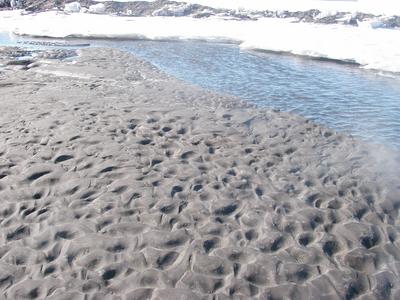
Ripple marks show evidences that something has happened here. The land doesn't get this way by itself. Although water is not here now, the ripple marks indicate that fast moving water came through this area.
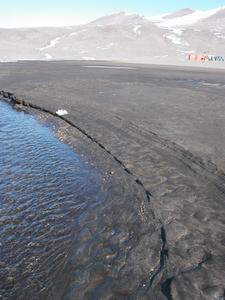
It was interesting to see the erosion along the stream banks.
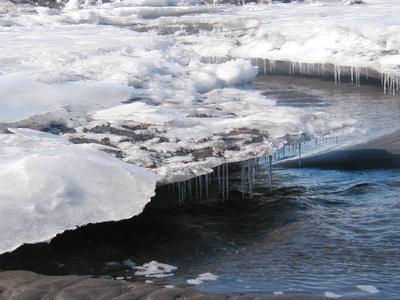
It was quite beautiful to see the sun shining on the ice to make it sparkle, while icicles hung over the rushing stream. It was time for the divers to make their second dive. Then at 9 p.m., Dr. Korsun and I headed back out to retrieve the broken down melter. Dr. Bowser and Dr. Korsun had made a replacement part to help get the melter back to camp. I didn't take my camera, but on the way out, we saw Weddell Seals out on the ice. They are massive marine animals that can grow to be about 10 feet long. They look like snails when they move on land, but in the water they are so graceful. We returned home about 12:30 a.m. to find dinner waiting. Dr. Alexander makes a wonderful curry with rice!
Contact the TEA in the field at
.
If you cannot connect through your browser, copy the
TEA's e-mail address in the "To:" line of
your favorite e-mail package.
|
